A Brief History of Transgender Representation in Star Trek
Partial spoiler warnings for TOS episode “Metamorphosis”, TNG episodes “The Outcast” and “The Host”, DS9 episode “Blood Oath”, and DIS episode “Forget Me Not”.
Star Trek has been radically racially inclusive since the beginning. It’s also mostly been ahead of its time on issues of equality between men and women. But it took a while to get to a good place when it comes to portrayals of nonbinary or transgender individuals.
Viewed through a modern lens, the early series have a bizarre tendency to assume and center a male/female gender binary even beyond the limits of life as we know it. For example, in The Original Series episode “Metamorphosis” from 1967, Captain Kirk explains how an alien that is essentially a cloud of electrified gas could have fallen in love with a human man by claiming that it is female. “The idea of male and female are universal constants,” says Kirk.
By the time of The Next Generation, Kirk would be proven wrong. The episode “The Outcast” features a species called the J’naii who are humanoid and androgynous. In the course of the episode, the J’naii scientist Soren works closely with the Enterprise’s Commander Riker, giving them ample opportunity to discuss their cultures' differing views on gender.
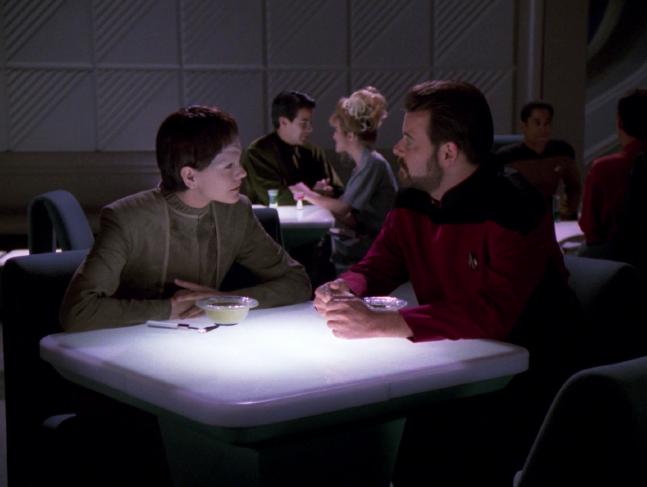
Soren has identified as female since childhood, but has had to hide this because the J’naii have criminalized gender identity. Individuals who are found to identify as male or female are arrested and forced to undergo a medical procedure to “cure” their deviation. Much of the episode’s drama comes from Soren’s desire to live freely as a woman and her culture’s staunch intolerance of this idea. The story clearly frames that intolerance as closed-minded, harmful, and wrong.
This episode aired in 1992. Today it seems like an ahead-of-its-time allegory for trans acceptance. But here’s the thing: that allegory was accidental. The episode was intended as an allegory for gay acceptance. That topic has its own complex history, but in short: At this time, there was a lot of demand for and hostility toward the idea of Star Trek putting gay characters on screen. This episode was a response to that controversy and an attempt to tell at least a metaphorical story about gayness. The idea that people could be transgender was so far from the minds of the writers that they decided to use gender identity as a metaphor for sexual orientation, and it was so far from the minds of the audience that that’s exactly how it was interpreted.
The episode had a mixed critical response. Some people applauded the attempt while others complained that it didn’t take enough of a stand because it addressed its intended topic in such an oblique and indirect way. But fast forward thirty years to a time when trans issues are prominent in the public consciousness and the episode plays much, much better as a bold, unsubtle, in-your-face trans rights story.
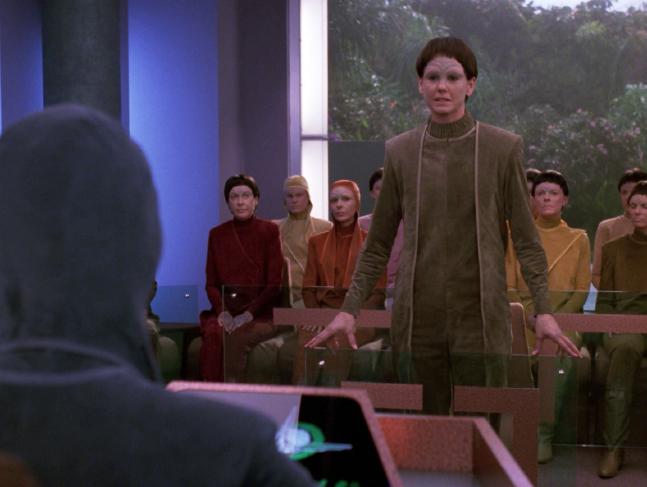
The J’naii are a one-shot species who only appear in that specific episode. But they aren’t the only quasi-trans race featured on The Next Generation. The episode “The Host” introduces a mysterious species called the Trill. A Trill ambassador named Odan has a romance with the Enterprise’s Dr. Crusher, but when Odan suffers an injury it’s revealed that the Trill are actually a joint species. The person that Odan seems to be is just a host body. The real Odan is a sort of teardrop-shaped invertebrate called a “symbiont”. When implanted in a host, the symbiont takes control, and the host body is just a meat puppet.
Odan’s injuries are severe enough that the host body dies. The Trill send a replacement host, which turns out to be female. It’s clear that the person in this body is still the same Odan from before, with exactly the same feelings for Dr. Crusher. But Dr. Crusher can’t handle the change and rejects the new, female-presenting Odan.
Again, this was not originally intended as a transgender allegory. In fact, the controversy around it at the time focused on whether Dr. Crusher’s rejection of Odan was homophobic. But this time, the intent wasn’t for the story to be about homosexuality either.
The episode’s director, Marvin Rush, stated that the story is “about the nature of love, why we love, and what prevents us from loving,” and the question of whether you could love someone for their “personality and core within” despite what the outside might be like1. When Dr. Crusher rejects Odan, it’s framed as a human failing that she cannot fully separate the two.
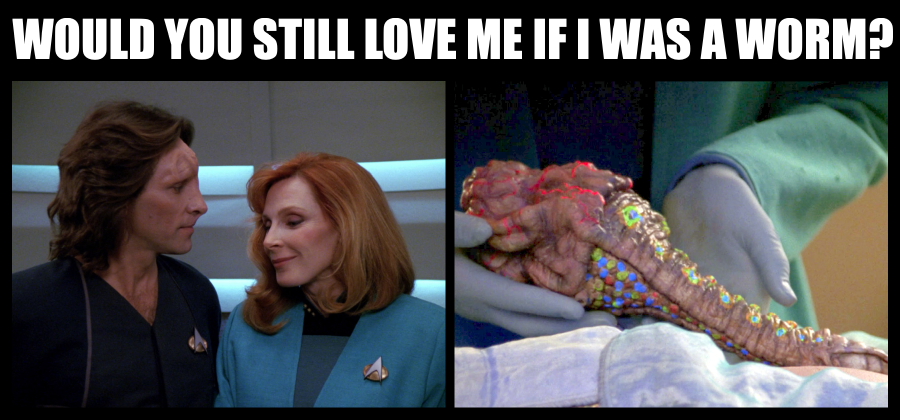
But ending the story in this particular way implies some interesting things about the Trill. It makes them seem postgender. The symbionts themselves don’t seem to have gender and just view it as an unimportant quirk of the host body, like hair length or eye color. And since gender isn’t important to them, they are effectively pansexual as well.
The Next Generation never explores these implications. Like the J’naii, the Trill never recur in that series. But in 1993, the next series, Deep Space Nine, started with a Trill in the main cast: science officer Jadzia Dax.
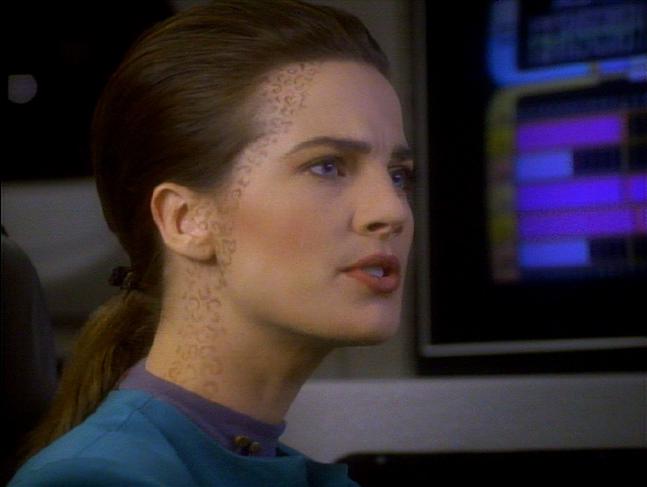
Deep Space Nine retcons a lot of what “The Host” establishes about the Trill. The most obvious change is the replacement of Odan’s forehead ridges with spots along the left and right sides of the body, but the biggest change is a more-even partnership between the symbiont and the host. Instead of the host being a nonentity piloted around by the symbiont, a joined Trill is a fusion of the personality, skills, and experience of the symbiont and the host, with the symbiont carrying forward memories and traits of previous hosts. When a symbiont joins with a new host, they both are and are not the same person they were before. Their identity becomes bigger, richer, more developed.
In the case of Jadzia Dax, Jadzia is the eighth host of the symbiont Dax. At the beginning of Deep Space Nine, the Dax symbiont had been alive for over three centuries, having been born in 2018. During those centuries, Dax had joined with multiple male and multiple female hosts and been both a father and a mother.
The host right before Jadzia was a man named Curzon, which has a few ramifications throughout the series. In the episode “Blood Oath”, Dax reunites with an old friend: a Klingon named Kor who knew her as Curzon. Once Dax convinces Kor that she actually is the same person he knew all those years ago, they have this exchange:
KOR: Oh, Curzon, my beloved old friend!
DAX: I’m Jadzia now.
KOR: Ah, well, Jadzia, my beloved old friend!
Viewed with a modern perspective from a time when “deadnaming” is a thing, this scene plays as a touching moment where Kor immediately accepts Dax’s new gender presentation. But again, I don’t think this was really the intent. Dax, like Odan, is usually portrayed as essentially postgender. Her commanding officer Sisko also first knew Dax as Curzon, and apparently started calling him “old man” as a friendly nickname–and when he calls Jadzia the same thing, she apparently finds it charming. It is clearly framed as a nod to their longstanding friendship and not Sisko misgendering her. There are also a couple episodes where we meet someone that Dax was romantically entangled with when one or both of them was in a different host, and any changes in their gender presentations are framed as irrelevant and not even commented on.
So, Star Trek had stumbled on this great transgender metaphor apparently by accident, and despite Deep Space Nine running for seven years with a Trill in the main cast it never really explores the ramifications. But they did not go unnoticed. The audience understood the potential of the Trill as transgender metaphor even if the shows hadn’t leaned into it. For example, here is Jadzia Dax on the cover of the Summer 1996 issue of Transgender Tapestry magazine:

In 2017, two decades later, the series Star Trek: Discovery began. It is in multiple ways a reinvention of Star Trek for modern audiences. For one thing, it’s the first Star Trek series to have unambiguous, no excuses, human gay characters in the main and recurring cast. But what I want to tell you about here is a story from Discovery’s third season, airing twenty years after the end of Deep Space Nine.
The crew of the Discovery meet Adira, who seems to be a normal young human woman. But it turns out that Adira had previously had a Trill boyfriend, Gray Tal, who was lethally injured in an accident. With no suitable Trill host available, the Tal symbiont had been implanted into Adira.
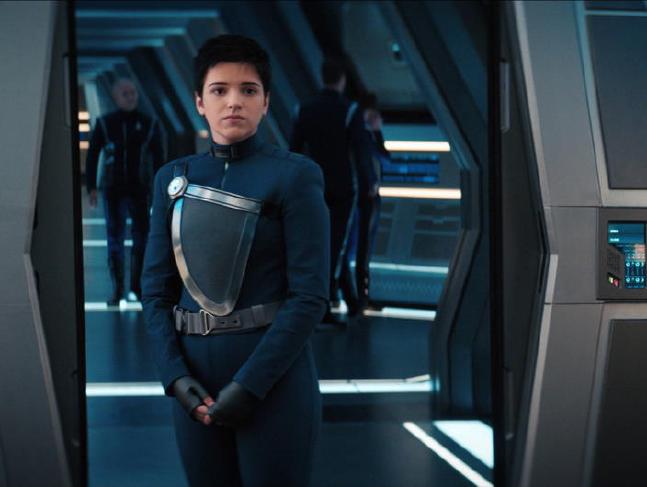
Because Adira is a human and not a Trill, the joining was complicated and Adira is unable to fully integrate with Tal and access the memories of previous hosts. So in the episode “Forget Me Not”, the crew take Adira to the Trill homeworld for some help from the experts.
The Trill are shocked to see a non-Trill host, especially given the incomplete joining that prevents the Tal symbiont from truly living on. One of their more-traditional government officials even calls Adira “an abomination” and suggests rejoining Tal with a Trill host, which would almost certainly kill Adira. The Trill leader decides not to do this, but does order Adira to leave the planet. As they are leaving, they are attacked by traditionalists who want to kill Adira to recover the symbiont. Fortunately, after fighting them off they encounter a more-open-minded spiritual leader who takes them to the symbionts' ancestral spawning pools where Adira can seek help by communing with the unjoined symbionts who live there.
Now, I simply cannot do this scene justice in a blog post like this, but in short: the symbionts help Adira connect with the Tal symbiont and all its previous hosts who are now part of Adira. Adira emerges from the pool, reborn as the complete and integrated Adira Tal. The Trill leaders, seeing that Adira is now truly joined with Tal, apologize for their earlier behavior and accept Adira as Tal’s new host.
This would work pretty well as a gender affirmation allegory already, but there are some parts I haven’t even told you yet. Gray, the boyfriend, is trans-male, having transitioned before joining with the Tal symbiont. As such, he serves as a gender-affirmed role model in Adira’s story. He comes from the largely postgender Trill culture and doesn’t seem to have ever struggled to understand himself. He shows what it’s like to live as someone who has defined their own identity. He even named himself Gray.
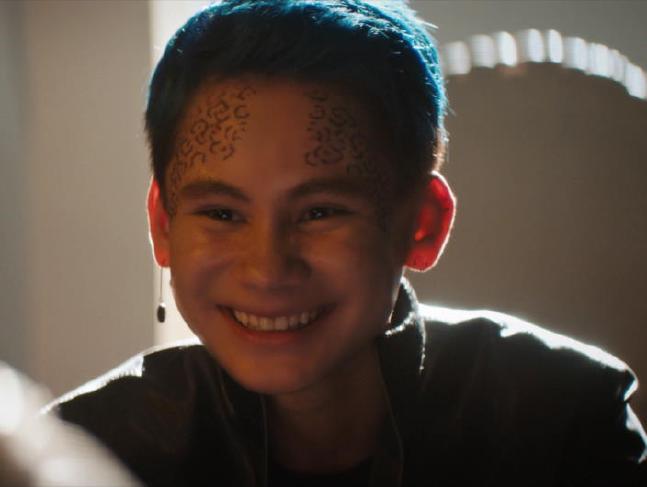
The human Adira, by contrast, is self-effacing and uncertain. But the rebirth in the Trill caves with the integration and embrace of all aspects of Adira’s new identity regardless of their gender allows Adira to be finally comfortable in their own skin. And a couple episodes later, Adira comes out as nonbinary and states a preference for they/them pronouns, which is how the rest of the cast refer to them from then on.
On top of this: Adira and Gray are both played by non-binary actors. Blu del Barrio plays Adira and also uses they/them pronouns, and Ian Alexander who plays Gray is transmasculine and uses he/him or they/them.

What I really love about this is that Blu and Ian were born in 1997 and 2001 respectively, after Deep Space Nine had been on the air for several years. Jadzia Dax, the oblique and accidental trans icon, was present in the cultural context their whole lives. And now, Blu and Ian have honored that legacy by helping Star Trek take the next step into true representation by portraying characters who actually match their own gender identities and presentations.
Adira became part of Discovery’s main cast. And now that the door is open, other Trek series have continued to live up to that example. Both Star Trek: Prodigy and Star Trek: Strange New Worlds have featured nonbinary characters using they/them pronouns without making a big deal of it at all. These people are just there, part of the shared world.
Star Trek is no longer dancing around the issue. It’s taken a strong, unambiguous stand, stating loud and clear that trans people are valid and their experiences are valid. They are, and should be, part of the future.
And in taking this stand, Star Trek continues to do what it has always done best: respond to dark and divisive times by showing an aspirational future to strive for. A beacon of hope among the stars.